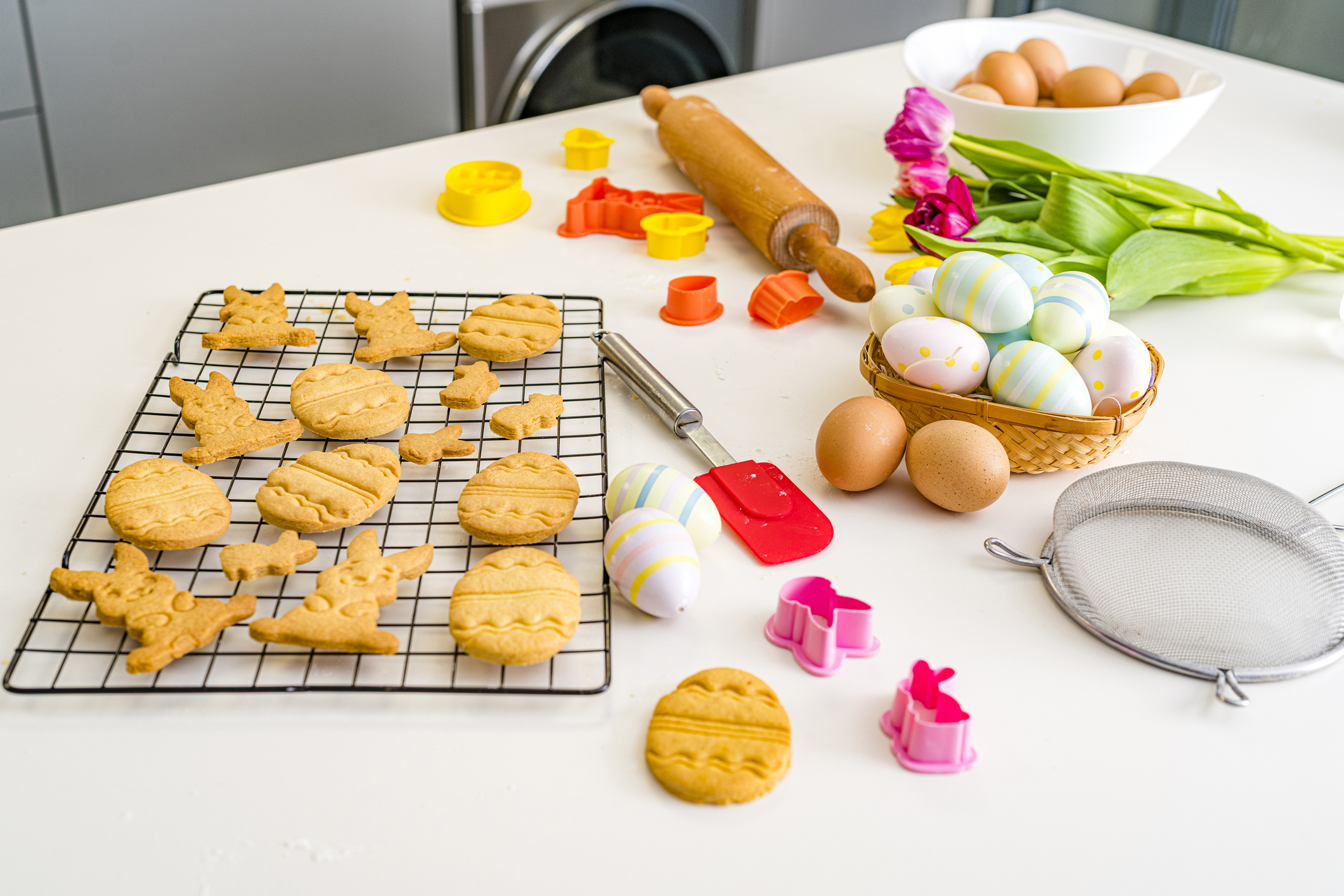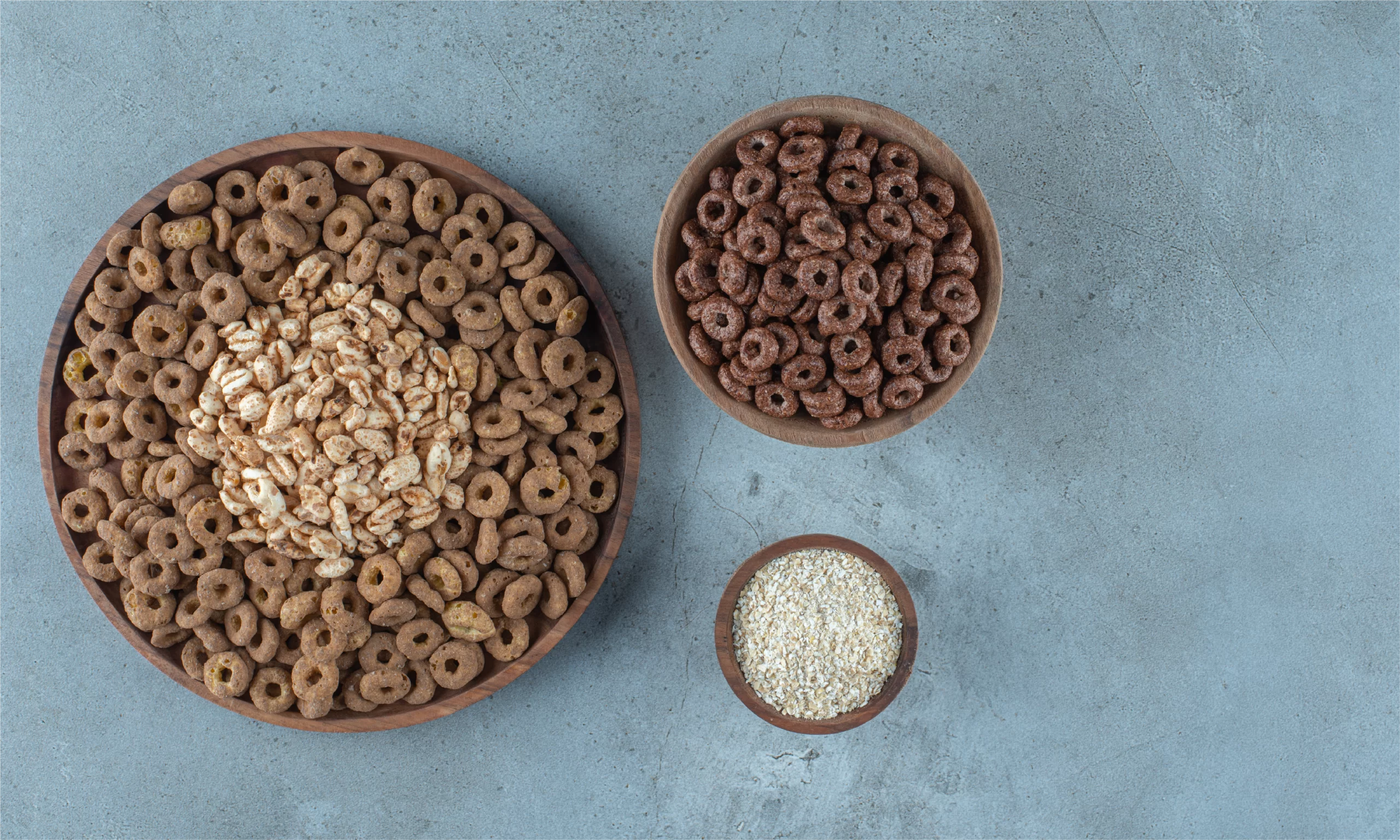DIY Food Kits: The Next Big Trend in Meal Prep
In a world where consumers are pampered with quick delivery, quality, and time-saving proportions, convenience has become a premium and a cornerstone of everyday life for many, and that has shifted. This shift has profoundly impacted how people approach meals—transforming how they cook, eat, and experience food at home. Following this, the culinary landscape is witnessing a massive turnaround, and DIY food kits are emerging as a significant trend in the market that is catering to the ease of home-cooked food and the comfort of having a quality meal.
Understanding the Trend of DIY Food Kits
The trend for DIY food kits is triggered by consumers wanting to try the fun of cooking without the hassle and time-consuming efforts of buying groceries and planning a meal. These kits have significantly increased popularity due to creativity, satisfaction, and culinary adventure. Besides, these kits come with pre-portioned ingredients and easy steps to cook recipes, aiding consumers in making delicious meals. Also, it is influenced by changing consumer preferences, urbanization, and technological advancements.
COVID-19 Impact
The popularity of DIY food kits spiked during the COVID-19 pandemic. During the lockdown, consumers explored their cooking hobbies by ordering meal kits, accelerating the business, and boosting the demand for meal kits with easy-to-follow recipes and all necessary ingredients.
Meal Kit Delivery Market Size
The global meal kit delivery market is estimated to reach USD 13.43 billion in revenue by 2024, with a steady annual growth rate (CAGR 2024-2029) of 6.82%, expected to bring the market volume to USD18.68bn by 2029. This growth exhibits the growing demand for meal kit services, including DIY, with the number of users anticipated to increase to 25.0 million by 2029, reflecting a significant shift towards the convenience of meal kits. The user penetration rate is projected to grow steadily from 0.3% in 2024 to 0.3% by 2029, while the ARPU (average revenue per user) is expected to be US$0.63k, highlighting the value consumers place on these services. The United States is projected to generate the highest revenue, with an estimated USD 5.65 billion in 2024, showcasing a strong market presence and consumer demand fuelled by a broad range of options catering to diverse dietary preferences and lifestyles.
Possible Applications
The possibilities of application for DIY food kits are enormous and range from culinary exploration to healthy home cooking, offering environmental sustainability and engaging social bonding. Importantly, the option of tailoring it for different preferences and lifestyles makes these kits a go-to option for consumers.
1. Home Cooking and Meal Preparation
- Everyday Meals: DIY food kits can help ease the cooking for individuals or families who don’t have much time to cook. The kit offers everything needed to make home-cooked meals, from the best ingredients to recipes.
- Cooking Skills Development: People can hone their cooking skills and learn advanced techniques to improve their culinary abilities through step-by-step instructions. It is applicable for beginners to experienced cooks.
- Healthy Eating: It also promotes healthy eating as several DIY meal kits are curated to help health-conscious consumers, providing them with balanced meals, nutrient-dense ingredients, and portion control.
2. Dietary and Lifestyle Preferences
- Special Diets: DIY food kits can be tailored for every individual’s diet, including vegan, Mediterranean keto, paleo, and gluten-free ingredients, making it better for consumers with dietary restrictions to savor customized meals.
- Weight Loss Programs: DIY meal kit services offer calorie-counted or portion-controlled meals to people who are looking for weight loss. As per their weight loss plans, they help users follow their goals religiously by providing organic ingredients for cooking.
- Allergen-Free Meals: DIY meal kits can offer allergen-friendly options, such as nut-free, dairy-free, or soy-free meals, ensuring individuals with food allergies can cook safely.
3. Corporate and Wellness Programs
- Employee Engagement: DIY food kits are helpful for companies as part of their corporate wellness programs. They encourage healthier lifestyles and develop clean eating habits during team-building activities, where employees can cook together virtually or in person and bond over health.
- Virtual Cooking Classes: DIY meal kits can be coupled with live cooking sessions to allow participants to cook (who wish to become chefs) in real-time with professional chefs or influencers during virtual events and competitions.
4. Family and Social Activities
- Family Bonding: DIY meal kits can help create a fun and engaging activity for families. They can cook together, share kitchen experiences, and inculcate valuable cooking skills while having a good time.
- Dinner Parties and Social Events: Meal kits can be designed for group cooking, making them ideal for hosting themed dinner parties or social gatherings where guests can cook and enjoy meals together.
5. Emergency Preparedness
- Disaster Relief: Pre-packaged, shelf-stable DIY meal kits can be used in disaster preparedness kits, providing families with nutritious, easy-to-prepare meals in case of emergencies.
- Survival Kits: Some meal kits are designed specifically for outdoor or survival situations, offering dehydrated or freeze-dried meals that are lightweight, portable, and quick to prepare.
6. Gifts and Special Occasions
- Gift Sets: DIY meal kits can be packaged as gifts for holidays, birthdays, or special occasions, allowing recipients to enjoy a fun, hands-on cooking experience.
- Seasonal Kits: Meal kits tied to specific holidays or seasons, like Thanksgiving or Christmas, can include festive recipes, making them an ideal way to celebrate the holidays with loved ones.
Role of AI In DIY Food Kits
Technological advancements are touching every other domain, and AI (Artificial Intelligence) is a testament to its undeniable role in improving DIY food kits’ experience, quality, and efficiency. It can enhance customization and optimize supply chains, transforming how food kits are designed, delivered, and enjoyed by customers. Here are some important ways illustrating how AI is involved in DIY food kits:
1. Customization and Personalization
- Tailored Meal Plans: Companies can use AI to analyze consumers’ dietary preferences, past meal choices, and preferences to package personalized meal plans. It can help ensure that the ingredients and recipes suit individual tastes, whether it’s for allergies, weight loss, or a specific diet like vegan or keto.
- Smart Recipe Suggestions: Artificial intelligence can analyze and suggest innovative recipes based on customers’ feedback and preferences, tailoring variations of meals that suit their nutritional goals or meal history. Moreover, it can even adapt to changing choices or preferences over time. AI-generated recipes could offer unique meal options for customers, encouraging culinary exploration and creativity.
- Ingredient Substitutions: AI can help customers with specific dietary needs by suggesting alternative ingredients or recipes that match the user’s flavor preferences, ensuring a seamless and safe cooking experience.
- Flavor Profiling: It can identify flavor combinations and suggest recipes based on ingredients that have contrasting or complementary tastes, ensuring that DIY food kits offer incredible experiences to consumers before and after cooking.
2. Predictive Analytics for Inventory Management and Demand
- Demand Forecasting: Startups or companies can predict demand patterns using AI by analyzing past sales data, seasonality, and external factors, including holidays or weather conditions. It can allow DIY food kit companies to optimize and adjust inventory to reduce food waste by accurately forecasting the number of kits required for dispatching.
- Efficient Sourcing: AI-driven algorithms can recommend the best sources for ingredients, ensuring high quality while minimizing costs. This also helps optimize the sourcing process, allowing companies to select the freshest, most sustainable options available.
- Smart Logistics: AI can help companies optimize the best routes for transportation, ensuring ingredients are on time with freshness intact. Such real-time tracking systems powered by AI can predict delays and provide solutions to reroute deliveries efficiently and effectively.
3. Food Safety and Quality Control
- Quality Assurance: The quality of ingredients packaged in the DIY food kits can be monitored by AI to detect issues like contamination or spoilage. AI can use machine learning and computer vision to check defects in produce, ensuring the freshest ingredients are delivered to buyers or subscribers.
- Food Safety Compliance: DIY meal kit companies can deploy AI to track and ensure that food safety standards are met as per compliance by monitoring the entire supply chain and finding potential risks related to hygiene or temperature control.
4. Customer Experience Enhancement
- Feedback Analysis: Using AI in the DIY food kits industry can ramp up their connection with customers as it can study and properly analyze customer feedback and reviews on social media and other platforms to know satisfaction levels regarding meal kit offerings. AI can identify patterns and suggest enhancements in meal recipes.
- Predictive Customer Support: The integration of AI-driven chatbots can provide 24/7 support to customers and seamlessly resolve different issues, including delivery-related problems, missed orders, or recipe inquiries. AI can anticipate customer needs and enhance user satisfaction.
5. Nutritional Insights and Health Tracking
- Nutritional Analysis: AI can provide detailed nutritional breakdowns of each recipe in a meal kit, allowing users to better understand the calorie count, macronutrients, and micronutrients of their meals. This can be especially useful for individuals managing chronic conditions like diabetes or hypertension.
- Health Monitoring Integration: Some meal kit services use AI to track users’ health goals (like weight loss or muscle gain) and adjust meal recommendations accordingly. AI can connect with wearable health devices to provide even more personalized recommendations based on activity levels, sleep patterns, or other health metrics.
6. Dynamic Pricing and Offers
- Dynamic Pricing Models: AI can analyze supply chain fluctuations, demand patterns, and customer preferences to set dynamic pricing for meal kits. This can allow companies to offer competitive prices while maintaining profitability.
- Customized Discounts: AI can generate personalized discounts or promotions for customers based on their purchasing history, encouraging loyalty and repeat purchases.
Recent Trends in the DIY Foot Kit Market
Recent trends in the DIY food kit market include:
- Sustainability Focus: Sustainability is the need of the hour in all sectors, and with consumers demanding it increasingly from DIY meal kit manufacturers, the trend for eco-friendly packaging and meals, as well as ingredients sourced through sustainable means, is pivotal and in trend.
- Health-Conscious Options: Most consumers are willing to spend on organic and health-focused meal kits that cater to specific dietary preferences, aiding them in staying fit, and, given the current lifestyle and burgeoning diseases, they are in demand.
- Subscription Models: The subscription models offered by DIY food kit companies help them stay relevant while adding to their revenue. Adopting subscription-based services provides customers with flexibility in meal selection and delivery frequency.
- Diverse Cuisine Offerings: DIY meal kits are in expansion mode to cater to a bigger consumer base and are quickly adding a variety of international cuisines to their list to appeal to adventurous eaters looking to relish new flavors at home.
Future Possibilities of DIY Meals Kit Market
Looking ahead, the DIY food kit market is poised for further evolution:
- Technology Integration: Technological advancements seem vast, with the integration of machine learning, AI, and other technology enhancements, as well as personalization and operational efficiency within DIY meal kit services.
- New Market Expansions: As urbanization is growing continuously globally, the chances of burgeoning market expansion have increased, and there are opportunities for meal kit companies to raise their foothold in new regions with tailored offerings catering to consumers’ demands.
- Health Integration: The future DIY meal kits may see advanced incorporation of nutritional tracking features or growing partnerships with health apps to offer consumers comprehensive dietary management tools to help them make judicious decisions for food choices.
- Improved Customer Experience: Consumers’ cooking and eating experience may improve with the integration of innovations like augmented reality (AR) cooking guides or smart kitchen appliances on an advanced level, which could further enrich the cooking experience.
Top Startups: DIY Food Kits
- Pizza Pilgrims: Initially a restaurant, Pizza Pilgrims pivoted to offering DIY pizza kits during the pandemic. They now sell thousands of kits weekly, allowing customers to create authentic Neapolitan pizzas at home.
- Kitchen: The startup offers a range of DIY meal kits that emphasize seasonal ingredients and simple cooking techniques. The startup aims to make home cooking accessible and enjoyable for everyone.
- ChefBox: It provides gourmet meal kits designed by professional chefs. Each kit includes high-quality ingredients and detailed instructions for cooks, allowing consumers to recreate restaurant-quality food at home.
- Blue Apron: The startup of the trailblazers in the DIY food kit industry. It offers a subscription service that delivers fresh ingredients and chef-designed recipes to customers’ doors. The company emphasizes high-quality ingredients and culinary education for home cooks.
- Hello Fresh: It is one of the largest DIY meal kit startups that delivers globally. It provides consumers with a variety of recipes and fresh ingredients. The company targets sustainability and innovation and focuses on minimizing food waste, offering customers easy-to-follow recipes that fulfill the dietary needs of many.
Conclusion
The demand for DIY food kits has been developing for years, and in today’s day and age, they have cemented grounds in the culinary space. With transformative and dynamic force, offering convenience coupled with customization, personalization, and creativity while maintaining food safety standards and healthy diet requirements for consumers. Notably, the rise of AI and technology integration promises to enhance both the customization and efficiency of meal delivery services, involving trends like sustainability and health-conscious eating demand.
As market growth accelerates and consumer demands diversify, the possibilities for DIY food kits are boundless. With the potential to revolutionize cooking at home, the DIY meal kit market stands at the intersection, ushering in a new era of culinary exploration that is accessible and enriching for everyone and fulfilling for business owners, including startups and investors.



